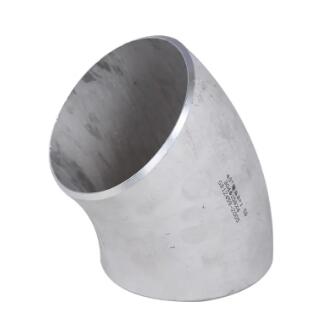Navigating Excellence: Considerations for Selecting Pipe Fittings Across Diverse Applications
2023-11-30
Introduction:
In the intricate tapestry of fluid systems, the selection of pipe fittings is a nuanced art that requires careful consideration of various factors. Whether in industrial processes, residential plumbing, or critical infrastructure projects, the choice of pipe fittings plays a pivotal role in the efficiency, safety, and reliability of the entire system. This blog explores the key considerations when selecting pipe fittings for different applications, unraveling the intricacies that guide engineers in making informed and tailored choices.
1. Material Compatibility:
The compatibility of materials is a foundational consideration when selecting pipe fittings. Different applications may demand specific materials based on factors such as corrosion resistance, temperature tolerance, and compatibility with the transported fluid. Understanding the materials in play ensures longevity and reliability.
2. Pressure and Temperature Ratings:
The operational environment defines the pressure and temperature requirements of a piping system. Selecting fittings with appropriate pressure and temperature ratings ensures that the system can safely handle the conditions it will encounter, preventing issues like leaks, ruptures, or material degradation.
3. Fluid Compatibility:
The nature of the fluid being transported is a critical factor in selecting pipe fittings. Some fluids may be corrosive, abrasive, or reactive with certain materials. Ensuring compatibility with the specific fluid being conveyed is crucial to prevent deterioration of the fittings and maintain system integrity.
4. Application-Specific Functionality:
Different applications have unique requirements, and pipe fittings are often designed with specific functionalities. Considerations such as the need for directional changes, branch connections, or transitions between pipe sizes influence the type of fittings chosen to optimize the system's functionality.
5. Environmental Conditions:
The environmental conditions surrounding the piping system impact the choice of fittings. Factors such as exposure to outdoor elements, potential for chemical exposure, or susceptibility to extreme temperatures guide the selection process to ensure fittings can withstand and perform effectively under these conditions.
6. Size and Dimensional Requirements:
Selecting fittings of the correct size and dimensions is fundamental to system efficiency. Proper sizing ensures optimal flow rates, prevents restrictions, and minimizes the risk of turbulence. Considerations include the diameter, length, and overall dimensions of the fittings.
7. Installation and Maintenance Ease:
The ease of installation and subsequent maintenance is a practical consideration. Choosing fittings that facilitate straightforward installation and maintenance procedures can reduce labor costs, downtime, and the likelihood of errors during the system's lifecycle.
8. Cost Considerations:
While prioritizing performance, engineers must also consider budget constraints. Balancing the cost-effectiveness of fittings with the specific requirements of the application is essential to ensure that the selected components meet performance standards without exceeding financial limitations.
Conclusion:
The considerations when selecting pipe fittings for different applications weave a complex tapestry of engineering precision, practicality, and adaptability. From material compatibility to adherence to industry standards, each factor contributes to the seamless functionality and reliability of fluid systems. As engineers navigate the diverse landscape of applications, the art of selecting pipe fittings becomes a deliberate and informed process, ensuring that every choice aligns with the unique demands of the system at hand.



